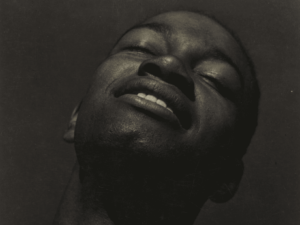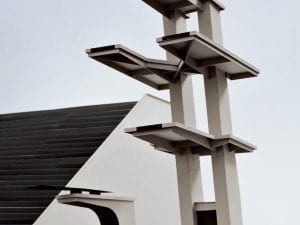Barrie Dale is a primarily a scientist, but is also known for his painting and his music. All around him he sees nature being destroyed, to the point where it is possible to envisage none being left, so he became a conservationist. To him, wild plants have great visual intensity, which he attributes to their simplicity. As part of his work, he conserves and photographs wild plants. The simplicity and intensity for him is both frustrating and satisfying, but it allows him to say things he wants to say. Here we talk to him about his processes and influences.
A:As a scientist how do you see art and science sitting together?
BD: Science and Art are simply different ways of accessing the beauty and wonder of the world. I am completely comfortable with the way they sit together. The supposed dichotomy between them is, to me, false. Great scientists are always conscious that aesthetic beauty is intrinsic to their work. Einstein, for example, would not contemplate a mathematical solution that was not aesthetically satisfying. If it was scientific truth it had to be beautiful.
A:You say that JMW Turner had a great influence on your work. What has this influence been?
BD:For me Turner’s triumph lies in his luminosity – his paintings seem to exude light. He almost always includes a source of light, direct or reflected, within his picture frame. In response, I try to make sure that, in my images, there is always something that appears to be glowing. Turner was also a master of using tone to attract the eye to the theme of a painting. Trying to emulate him in that would be the work of a lifetime, but we must try nonetheless.
A:You mention the importance of light in your work. Please explain a little about your processes?
BD: When photographing nature you rarely get to choose. I like looking into the light, preferably as it passes through foliage, creating both light and dark. I like to see the focus of my subject lit differently to the rest. I like to see diffuse light creeping in at the periphery. Unlike most photographers, I am quite happy for light to lead the viewer out of the picture into the vast beyond, emphasising that, although you have just found something interesting, there is always more to be explored.
A:What originally made you focus on the natural subject of your artwork?
BD:I photograph natural forms because that’s what I do. They fulfil me. They enable me so say things I want to say. They evoke in me a whole range of emotions. They resonate with the great themes of art and literature, and with the rhythm of life itself. They are not separate from us; they are part of us. They are where we began. If they do not survive and thrive nor will we, at least not in the spiritual sense.
A:In terms of your subject, you created a ‘natural’ meadow; now you photograph it. How does the process of forming the subject influence the final photographs?
BD: That’s a very interesting question, and the answer is ‘quite a lot’. I feel parental towards the plants in my field and wood. I look at them much more closely than I would otherwise. I am not on somebody else’s property, so I don’t need ‘permission’ (psychologically, that seems important). I don’t collect an audience – when you are on your knees or flat on your belly photographing something that is only a few millimetres high you can attract some quite rich commentary. So I think that the ‘influence’ frees me, makes my photography more expansive and daring.
A:How do you see your work evolving and developing in the future?
BD: Looking back, I can see that my interests and techniques have evolved. I am becoming more abstract. There are a number of plants and situations within which I am now convinced there is artistic potential which I have never realised. I am strict about not repeating myself, so if I identify potential it would not relate to something I had done before. I hope I am becoming more subtle and more meaningful. I hope I am better at extracting what there is. I’m glad to say that it is still very difficult to produce satisfying images even when you’re sure the potential is there.
To see more of Barrie Dale’s work please go to www.wildhaven.co.uk
To see his listing in the Artists’ Directory in Aesthetica Magazine issue 58 pick up a copy at www.aestheticamagazine.com/shop
Credits
1. Tumult. Courtesy of the artist
2. Morning Kiss. Courtesy of the artist





